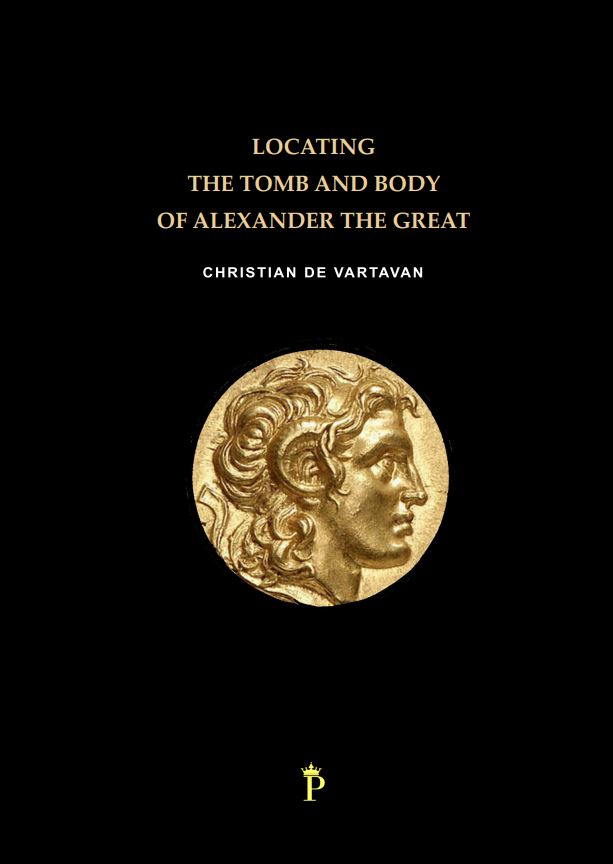by Christian de Vartavan
The location of the tomb and body of Alexander the Great remains one of the greatest unsolved mysteries of archaeology. The author’s family hails from Alexandria (Egypt), and this book is the result of research that began in 1995, hence 28 years ago. The author draws on extremely rare or neglected sources, particularly from the Coptic and Islamic periods, which were obtained with the greatest difficulty and the help of some of the very best scholars in the field. Notably from the French Collège de France and the Polish Centre for Mediterranean Archaeology.
The research is divided into five parts and 56 synthetic chapters. Part I examines the evidence provided by the Classics, Greek and Roman. Part II looks at the traces left during the Christian Coptic and Islamic periods. Part III examines the evidence provided by foreign travellers, and Part IV analyses the work of archaeologists who have tried to find Alexander’s tomb. Part V takes the research onto new grounds and splits it into two: the search for the tomb on the one hand, and the body of Alexander on the other, which are two distinct issues.
Dr. de Vartavan meticulously investigated ancient Alexandria’s archaeology and topography first-hand. Notably, in 1996, he received the extraordinary privilege from the mufti of the Nabi Daniel mosque to access its previously inaccessible crypt – a rare opportunity afforded to very few at the time. This unique access allowed him to document the crypt, capturing photos before its later renovation. The historical local tradition placing Alexander’s original mausoleum beneath this mosque, which the author suggests was previously an early Christian oratory. Using a rare Islamic source, he also provides a new explanation for the presence of the tombs of the prophets Daniel and Luqmân in its crypt.
The book culminates by pinpointing not just one, but two potential locations for Alexander’s tomb and body. It re-enforces previous conclusions about the final position of the tomb within Alexandria itself, suggesting it was indeed relocated from its original location during antiquity. Then, unexpectedly, the book reveals a separate location outside the city walls where the body of Alexander the Great itself might now currently await to be rediscovered.

Hardback. 238 pages. 29.7 x 21 x 1.7 cm. 123 Illustrations (102 in color, most full page), 35 maps (including the oldest known of Alexandria), 22 manuscripts (many very rare), 26 antiquities, 9 engravings, and 31 photos or old postcards of Alexandria. Tables of illustrations classified by date. Extensive index of names and sources. 1.07 Kg.
£115 + 5.70 Post & Package (UK) / £ 13.50 (Worldwide)
ISBN 978-1-913984-06-9
ORDER UK or ORDER WORLDWIDE
They already ordered it: University College London, Trinity College Dublin, Museen für Kulturgeschichte Hannover, Getty Foundation, etc…
Do not hesitate to email projectispublishing[@]gmail.com for assistance
About the author: Dr Christian de Vartavan FLS FRSA CMLJ was educated at University College London’s Institute of Archaeology, where he earned his BA, MSc, and PhD degrees. While still a student, Dr de Vartavan gained world fame in Egyptology by discovering part of the forgotten plant material from King Tutankhamun’s tomb in the Royal Botanical Gardens, Kew in 1988. Dr de Vartavan’s Egyptology research has earned him the rare honor of being part of the UK’s National Archive in his lifetime and is kept by the University of Oxford’s Griffith Institute (Sackler Library). His family lived in Alexandria between 1903 and 1992, where he spent part of his youth.
